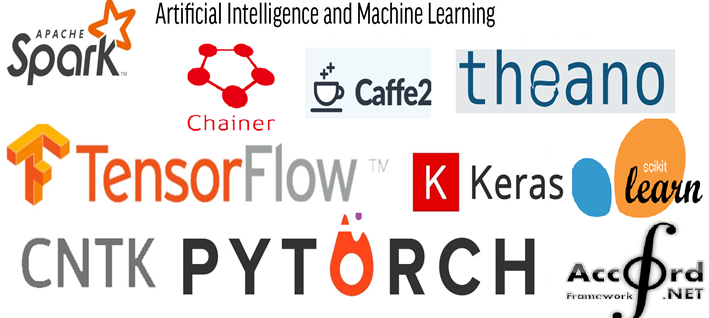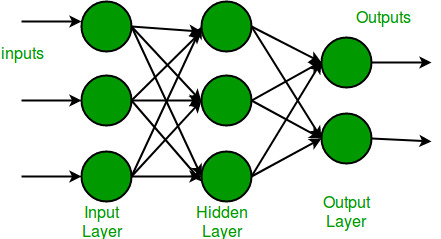
Deep learning is a way to teach concepts in a deeper and more meaningful way. This approach is growing in popularity, particularly in STEM fields. This can also apply to K-12 education. This article will cover some of its characteristics. This article will help educators to understand the benefits of deep learning for students and their future careers.
Deep learning is a hallmark of education
Deep learning is a type of teaching method that promotes high-level thinking and deeper understanding. This involves critical analysis by students and the linking of new ideas to concepts and principles they already know. It also involves problem-solving in unfamiliar contexts. It seeks to instill a deep understanding that students can apply for their entire lives. Deep learners are independent, collaborative, and have high meta-cognitive skills.
In its simplest form, deep learning uses multiple levels of processing data. This allows it to develop highly-sophisticated, data-driven models which improve over time. It can also learn from large amounts of data. Deep learning can detect fraudulent transactions using a clip of video. It can also analyze data from webcams and sensors. This technology is also useful in government programs. It can reduce fraudulent transactions, speed up legal process, and implement more efficient policies.

Deep learning can be considered a subset or machine learning. It employs multiple layers of neural networks in order to recognize complex patterns and learn from them. Deep learning systems can identify objects and understand human speech. They learn by analyzing vast amounts of data and then applying the results to new situations.
Deep learning is a hallmark of STEM fields
Deep learning is a powerful tool to analyse large quantities of data. It is often used in the fields of cell biology and molecular biology. Microscopical observation of cultured cells in these fields is vital. Different cells display distinct morphological features as well as distinctive gene expression patterns. Humans are unable to distinguish differentiated cells visually, so researchers have been using deep learning to improve cell biology research.
Deep learning is also a useful tool in drug discovery. It can aid in the categorization of drugs based on their molecular features. Atomwise is an algorithm that identifies drugs using specific criteria. It allows researchers the ability to study 3-D structures of molecules such small molecules and proteins.
Deep learning can also be helpful in biomedical data analytics, which can help reduce the labor-intensive process for feature extraction. This can be a great way to overcome the challenges presented by biomedical large data. Deep learning can also aid in recognition of speech and natural languages.

Characteristics of deep learning in K-12
Deep learning is a teaching method that fosters high-level thinking skills. It focuses on challenging students to analyze data, create carefully constructed points of view, and solve complex problems. It promotes critical thinking and curiosity in students. It can also be used across all subjects and levels of learning.
The impact of deep learning on student performance can be significant in K-12 education. Deep learning can help children solve difficult problems. Additionally, educators can use it to engage students in STEM subjects. Deep learning networks were also reported by schools that had higher levels of self-efficacy and collaboration skills as well as a greater motivation to learn. These schools also scored higher on state-standardized exams.
Deep learning is not new in the education field, but it is still in its infancy. Teachers often feel uncomfortable helping other teachers with the learning process, fearful of losing their own content. There is also a general lack of teachers willing to mentor others in learning.
FAQ
How does AI impact work?
It will change the way we work. It will allow us to automate repetitive tasks and allow employees to concentrate on higher-value activities.
It will improve customer services and enable businesses to deliver better products.
It will allow us future trends to be predicted and offer opportunities.
It will enable companies to gain a competitive disadvantage over their competitors.
Companies that fail AI adoption will be left behind.
Is AI possible with any other technology?
Yes, but not yet. Many technologies have been developed to solve specific problems. However, none of them can match the speed or accuracy of AI.
Where did AI originate?
The idea of artificial intelligence was first proposed by Alan Turing in 1950. He stated that a machine should be able to fool an individual into believing it is talking with another person.
John McCarthy took the idea up and wrote an essay entitled "Can Machines think?" John McCarthy, who wrote an essay called "Can Machines think?" in 1956. He described the problems facing AI researchers in this book and suggested possible solutions.
What are some examples of AI applications?
AI can be applied in many areas such as finance, healthcare manufacturing, transportation, energy and education. These are just a handful of examples.
-
Finance – AI is already helping banks detect fraud. AI can spot suspicious activity in transactions that exceed millions.
-
Healthcare - AI can be used to spot cancerous cells and diagnose diseases.
-
Manufacturing – Artificial Intelligence is used in factories for efficiency improvements and cost reductions.
-
Transportation - Self Driving Cars have been successfully demonstrated in California. They are being tested in various parts of the world.
-
Energy - AI is being used by utilities to monitor power usage patterns.
-
Education - AI has been used for educational purposes. Students can interact with robots by using their smartphones.
-
Government – AI is being used in government to help track terrorists, criminals and missing persons.
-
Law Enforcement – AI is being used in police investigations. Detectives can search databases containing thousands of hours of CCTV footage.
-
Defense - AI can be used offensively or defensively. Artificial intelligence systems can be used to hack enemy computers. Artificial intelligence can also be used defensively to protect military bases from cyberattacks.
What is the latest AI invention
Deep Learning is the latest AI invention. Deep learning (a type of machine-learning) is an artificial intelligence technique that uses neural network to perform tasks such image recognition, speech recognition, translation and natural language processing. Google invented it in 2012.
Google's most recent use of deep learning was to create a program that could write its own code. This was done with "Google Brain", a neural system that was trained using massive amounts of data taken from YouTube videos.
This enabled it to learn how programs could be written for itself.
IBM announced in 2015 they had created a computer program that could create music. Music creation is also performed using neural networks. These are sometimes called NNFM or neural networks for music.
What are the benefits to AI?
Artificial intelligence is a technology that has the potential to revolutionize how we live our daily lives. It has already revolutionized industries such as finance and healthcare. It's expected to have profound impacts on all aspects of education and government services by 2025.
AI has already been used to solve problems in medicine, transport, energy, security and manufacturing. There are many applications that AI can be used to solve problems in medicine, transportation, energy, security and manufacturing.
What makes it unique? Well, for starters, it learns. Computers learn independently of humans. Instead of teaching them, they simply observe patterns in the world and then apply those learned skills when needed.
This ability to learn quickly is what sets AI apart from other software. Computers are capable of reading millions upon millions of pages every second. They can instantly translate foreign languages and recognize faces.
And because AI doesn't require human intervention, it can complete tasks much faster than humans. It can even surpass us in certain situations.
A chatbot called Eugene Goostman was developed by researchers in 2017. It fooled many people into believing it was Vladimir Putin.
This is proof that AI can be very persuasive. AI's adaptability is another advantage. It can be trained to perform different tasks quickly and efficiently.
This means businesses don't need large investments in expensive IT infrastructures or to hire large numbers.
Who is the current leader of the AI market?
Artificial Intelligence (AI), a subfield of computer science, focuses on the creation of intelligent machines that can perform tasks normally required by human intelligence. This includes speech recognition, translation, visual perceptual perception, reasoning, planning and learning.
There are many types of artificial intelligence technologies available today, including machine learning and neural networks, expert system, evolutionary computing and genetic algorithms, as well as rule-based systems and case-based reasoning. Knowledge representation and ontology engineering are also included.
There has been much debate about whether or not AI can ever truly understand what humans are thinking. Deep learning has made it possible for programs to perform certain tasks well, thanks to recent advances.
Google's DeepMind unit has become one of the most important developers of AI software. Demis Hashibis, who was previously the head neuroscience at University College London, founded the unit in 2010. DeepMind developed AlphaGo in 2014 to allow professional players to play Go.
Statistics
- The company's AI team trained an image recognition model to 85 percent accuracy using billions of public Instagram photos tagged with hashtags. (builtin.com)
- That's as many of us that have been in that AI space would say, it's about 70 or 80 percent of the work. (finra.org)
- By using BrainBox AI, commercial buildings can reduce total energy costs by 25% and improves occupant comfort by 60%. (analyticsinsight.net)
- In the first half of 2017, the company discovered and banned 300,000 terrorist-linked accounts, 95 percent of which were found by non-human, artificially intelligent machines. (builtin.com)
- A 2021 Pew Research survey revealed that 37 percent of respondents who are more concerned than excited about AI had concerns including job loss, privacy, and AI's potential to “surpass human skills.” (builtin.com)
External Links
How To
How to Setup Google Home
Google Home, a digital assistant powered with artificial intelligence, is called Google Home. It uses sophisticated algorithms, natural language processing, and artificial intelligence to answer questions and perform tasks like controlling smart home devices, playing music and making phone calls. Google Assistant can do all of this: set reminders, search the web and create timers.
Google Home integrates seamlessly with Android phones and iPhones, allowing you to interact with your Google Account through your mobile device. If you connect your iPhone or iPad with a Google Home over WiFi then you can access features like Apple Pay, Siri Shortcuts (and third-party apps specifically optimized for Google Home).
Google Home has many useful features, just like any other Google product. It can learn your routines and recall what you have told it to do. It doesn't need to be told how to change the temperature, turn on lights, or play music when you wake up. Instead, all you need to do is say "Hey Google!" and tell it what you would like.
Follow these steps to set up Google Home:
-
Turn on Google Home.
-
Press and hold the Action button on top of your Google Home.
-
The Setup Wizard appears.
-
Continue
-
Enter your email address and password.
-
Select Sign In
-
Google Home is now available